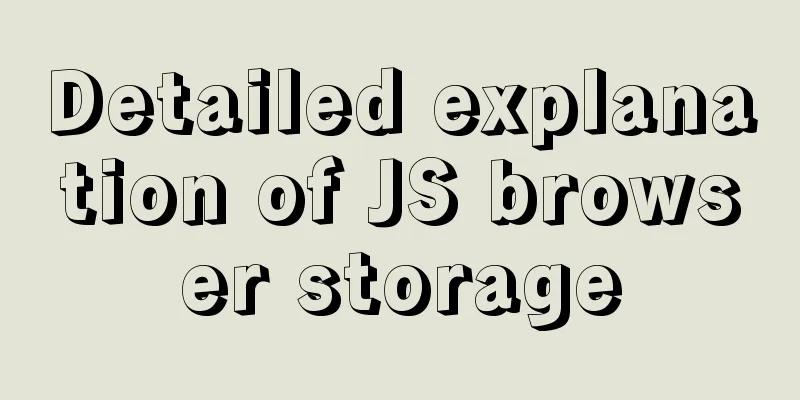Using Openlayer in Vue to realize loading animation effect

|
Note: You cannot use scoped animations! ! ! ! via gif
<template>
<div class="test">
<div id="map" ref="map" style="width: 100vw; height: 100vh"></div>
</div>
</template>
<script>
import "ol/ol.css";
import { Map, View, Overlay } from "ol";
import TileLayer from "ol/layer/Tile";
import OSM from "ol/source/OSM";
export default {
name: "gif",
data() {
return {
map: {},
overlay: {},
markerPoint: {},
geojsonData:
type: "FeatureCollection",
features: [
{
type: "Feature",
properties:
title: "Alarm 1",
},
geometry:
type: "Point",
coordinates: [91.48879670091165, 37.83814884701121],
},
},
{
type: "Feature",
properties:
title: "Alarm 2",
},
geometry:
type: "Point",
coordinates: [99.19515576149941, 26.713646654711134],
},
},
{
type: "Feature",
properties:
title: "Alarm 3",
},
geometry:
type: "Point",
coordinates: [123.74363825288785, 44.363694825734726],
},
},
],
},
};
},
mounted() {
this.initMap();
this.addGif();
},
methods: {
// Initialize the map initMap() {
this.map = new Map({
target: "map",
layers:
new TileLayer({
source: new OSM(),
}),
],
view: new View({
projection: "EPSG:4326",
center: [104.912777, 34.730746],
zoom: 4.5,
}),
});
},
// Use Overlay to add GIF dynamic icon point information addGif() {
let coordinates = this.getCoordinatesByGeojson(this.geojsonData);
for (const i in coordinates) {
let gif_span = document.createElement("span");
document.documentElement.appendChild(gif_span);
this.$nextTick(() => {
this.markerPoint = new Overlay({
position: coordinates[i],
element: gif_span,
positioning: "center-center",
});
this.map.addOverlay(this.markerPoint);
});
}
},
//Get the coordinate set based on geojson data getCoordinatesByGeojson(geojsonData) {
let coordinates = [];
geojsonData.features.map((feature) => {
coordinates = [...coordinates, feature.geometry.coordinates];
});
return coordinates;
},
},
};
</script>
<style lang='scss' >
.test {
span {
display: inline-block;
width: 80px;
height: 80px;
border-radius: 50%;
background: url("https://smart-garden-manage.oss-cn-chengdu.aliyuncs.com/gif.gif")
no-repeat;
background-size: 80px 80px;
}
}
</style>Through keyframes @keyframes
<template>
<div class="test">
<div id="map" ref="map" style="width: 100vw; height: 100vh"></div>
</div>
</template>
<script>
import "ol/ol.css";
import { Map, View, Overlay } from "ol";
import TileLayer from "ol/layer/Tile";
import OSM from "ol/source/OSM";
export default {
name: "gif",
data() {
return {
map: {},
overlay: {},
point_overlay: {},
geojsonData:
type: "FeatureCollection",
features: [
{
type: "Feature",
properties:
title: "Alarm 1",
},
geometry:
type: "Point",
coordinates: [91.48879670091165, 37.83814884701121],
},
},
{
type: "Feature",
properties:
title: "Alarm 2",
},
geometry:
type: "Point",
coordinates: [99.19515576149941, 26.713646654711134],
},
},
{
type: "Feature",
properties:
title: "Alarm 3",
},
geometry:
type: "Point",
coordinates: [123.74363825288785, 44.363694825734726],
},
},
],
},
};
},
mounted() {
this.initMap();
this.addGif();
},
methods: {
// Initialize the map initMap() {
this.map = new Map({
target: "map",
layers:
new TileLayer({
source: new OSM(),
}),
],
view: new View({
projection: "EPSG:4326",
center: [104.912777, 34.730746],
zoom: 4.5,
}),
});
},
// Use Overlay to add GIF dynamic icon point information addGif() {
let coordinates = this.getCoordinatesByGeojson(this.geojsonData);
for (const i in coordinates) {
let point_div = document.createElement("div");
point_div.className = "css_animation";
point_div.id = `coordinate_${i}`;
document.documentElement.appendChild(point_div);
this.$nextTick(() => {
this.point_overlay = new Overlay({
position: coordinates[i],
element: point_div,
positioning: "center-center",
});
this.map.addOverlay(this.point_overlay);
});
}
},
//Get the coordinate set based on geojson data getCoordinatesByGeojson(geojsonData) {
let coordinates = [];
geojsonData.features.map((feature) => {
coordinates = [...coordinates, feature.geometry.coordinates];
});
return coordinates;
},
},
};
</script>
<style lang='scss' >
.test {
.css_animation {
height: 50px;
width: 50px;
border-radius: 50%;
background: rgba(255, 0, 0, 0.9);
box-shadow: inset 0 0 8px red;
transform: scale(0);
animation: myfirst 3s;
animation-iteration-count: infinite; // infinite loop}
@keyframes myfirst {
to {
transform: scale(2);
background: rgba(0, 0, 0, 0);
box-shadow: inset 0 0 50px rgba(255, 0, 0, 0);
}
}
}
</style>It can load animations and obtain the attributes of the feature points where the animations are located.
<template>
<div class="test">
<div id="map" ref="map" style="width: 100vw; height: 100vh"></div>
<div
id="popup"
style="
position: absolute;
background-color: rgba(47, 57, 90, 0.678);
bottom: 20px;
left: 30px;
border: 1px solid white;
padding: 10px;
width: 60px;
"
>
{{ properties.title }}
</div>
</div>
</template>
<script>
import "ol/ol.css";
import { Map, View, Overlay } from "ol";
import { OSM, Vector as VectorSource } from "ol/source";
import { Vector as VectorLayer, Tile as TileLayer } from "ol/layer";
import GeoJSON from "ol/format/GeoJSON";
import Select from "ol/interaction/Select";
import { altKeyOnly, click, pointerMove } from "ol/events/condition";
import { Fill, Stroke, Style, Circle } from "ol/style";
export default {
name: "gif",
data() {
return {
map: {},
layer: {},
overlay: {},
point_overlay: {},
geojsonData:
type: "FeatureCollection",
features: [
{
type: "Feature",
properties:
title: "Alarm 1",
},
geometry:
type: "Point",
coordinates: [91.48879670091165, 37.83814884701121],
},
},
{
type: "Feature",
properties:
title: "Alarm 2",
},
geometry:
type: "Point",
coordinates: [99.19515576149941, 26.713646654711134],
},
},
{
type: "Feature",
properties:
title: "Alarm 3",
},
geometry:
type: "Point",
coordinates: [123.74363825288785, 44.363694825734726],
},
},
],
},
select: {},
properties:
title: "",
},
};
},
mounted() {
this.initMap();
// this.addGif(); //After commenting out, click to get feature attributes},
methods: {
// Initialize the map initMap() {
this.layer = new VectorLayer({
source: new VectorSource({
features: new GeoJSON().readFeatures(this.geojsonData),
}),
});
this.map = new Map({
target: "map",
layers:
new TileLayer({
source: new OSM(),
}),
this.layer,
],
view: new View({
projection: "EPSG:4326",
center: [104.912777, 34.730746],
zoom: 4.5,
}),
});
this.select = new Select({
condition: click, //Click to select});
this.map.addInteraction(this.select);
let overlayer_popup = new Overlay({
element: document.getElementById("popup"),
positioning: "center-center", //Must add it, otherwise there will be offset});
this.select.on("select", (e) => {
let coordinate = e.mapBrowserEvent.coordinate; //Get the selected coordinates let featureSelect = e.selected[0]; //Selected feature if (e.selected.length !== 0) {
overlayer_popup.setPosition(coordinate);
this.map.addOverlay(overlayer_popup);
} else {
overlayer_popup.setPosition("");
}
if (featureSelect) {
this.properties = featureSelect.getProperties(); //Get all properties of the current feature //Set the selected style featureSelect.setStyle(
new Style({
image: new Circle({
radius: 10,
fill: new Fill({
//Vector layer fill color and transparency color: "rgba(255,0,0,0.5)",
}),
stroke: new Stroke({
//Border style color: "rgba(100, 90, 209, 0.6)",
width: 3,
}),
}),
})
);
}
});
// Set the style of the mouse over the vector element this.map.on("pointermove", (e) => {
const isHover = this.map.hasFeatureAtPixel(e.pixel);
this.map.getTargetElement().style.cursor = isHover ? "pointer" : "";
});
},
// Use Overlay to add GIF dynamic icon point information addGif() {
let coordinates = this.getCoordinatesByGeojson(this.geojsonData);
for (const i in coordinates) {
let point_div = document.createElement("div");
point_div.className = "css_animation";
point_div.id = `coordinate_${i}`;
document.documentElement.appendChild(point_div);
this.$nextTick(() => {
this.point_overlay = new Overlay({
position: coordinates[i],
element: point_div,
positioning: "center-center",
});
this.map.addOverlay(this.point_overlay);
});
}
},
//Get the coordinate set based on geojson data getCoordinatesByGeojson(geojsonData) {
let coordinates = [];
geojsonData.features.map((feature) => {
coordinates = [...coordinates, feature.geometry.coordinates];
});
return coordinates;
},
},
};
</script>
<style lang='scss' scoped>
.test {
}
</style>
<style lang='scss' >
.test {
.css_animation {
height: 50px;
width: 50px;
border-radius: 50%;
background: rgba(255, 0, 0, 0.9);
box-shadow: inset 0 0 8px red;
transform: scale(0);
animation: myfirst 3s;
animation-iteration-count: infinite; // infinite loop}
@keyframes myfirst {
to {
transform: scale(2);
background: rgba(0, 0, 0, 0);
box-shadow: inset 0 0 50px rgba(255, 0, 0, 0);
}
}
}
</style>This is the end of this article about Vue+Openlayer loading animation. For more related Vue Openlayer loading animation content, please search 123WORDPRESS.COM's previous articles or continue to browse the following related articles. I hope everyone will support 123WORDPRESS.COM in the future! You may also be interested in:
|
<<: MySQL cursor principle and usage example analysis
>>: Analysis of common basic operations of MySQL database [create, view, modify and delete database]
Recommend
Vue3 AST parser-source code analysis
Table of contents 1. Generate AST abstract syntax...
The button has a gray border that is ugly. How to remove it?
I used the dialog in closure and drew a dialog wit...
Understanding the Lazy Loading Attribute Pattern in JavaScript
Traditionally, developers create properties in Ja...
4 ways to optimize MySQL queries for millions of data
Table of contents 1. The reason why the limit is ...
Detailed explanation of Nginx process scheduling problem
Nginx uses a fixed number of multi-process models...
Use of align-content in flex layout line break space
1. The effect diagram implemented in this article...
Detailed explanation of the process of deploying Tomcat and creating the first web project in IDEA 2020.3.1
Table of contents Tomcat Introduction Tomcat depl...
Detailed explanation of the role of the new operator in Js
Preface Js is the most commonly used code manipul...
Implementation of debugging code through nginx reverse proxy
background Now the company's projects are dev...
A case study to thoroughly understand how to correctly use MySQL inndb joint index
There is a business that queries the 5 most recen...
Complete steps to set up automatic updates in CentOS 8
The best thing you can do for your data and compu...
Detailed explanation of how MySQL solves phantom reads
1. What is phantom reading? In a transaction, aft...
Summary of various ways to create objects in js and their advantages and disadvantages
Table of contents Early creation method Factory P...
Node connects to MySQL and encapsulates its implementation code for adding, deleting, modifying and checking
Table of contents Node connects to Mysql Install ...
How to count down the date using bash
Need to know how many days there are before an im...













